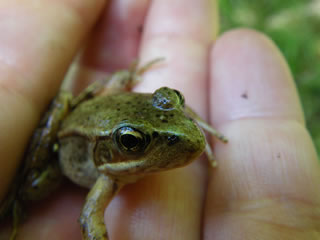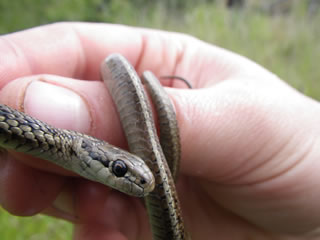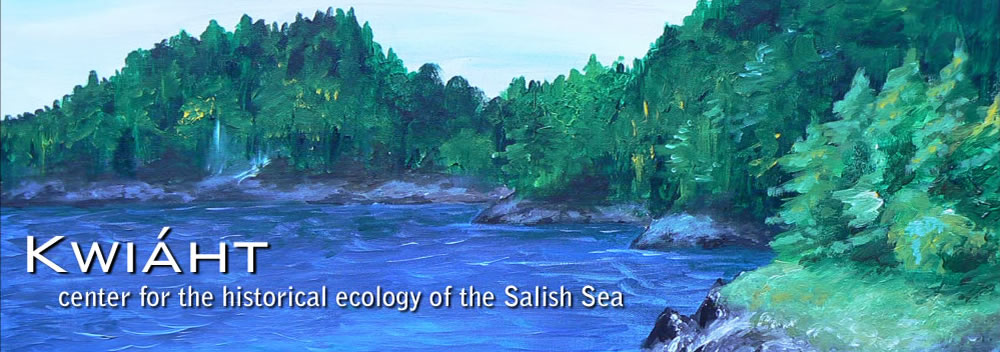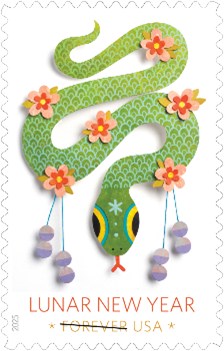Celebrate the Year of the Snake
by naming a Sharp-tailed Snake or by helping us with our research!
Amphibians and Reptiles

Juvenile Northwestern Salamander
Amphibians are widely regarded as indicators of ecosystem health. Relatively few native species have been identified in the San Juan Islands, and their status and distribution are uncertain. Of special interest are Ambystoma gracilis (Northwestern salamander), which we have observed in a few watersheds on Lopez, Orcas, and San Juan islands, and its close relative Ambystoma macrodactylis (Long-Toed Salamander), which we have observed on Orcas Island and a large wetland on Shaw Island. These woodland salamanders tend to roam widely in search of invertebrate prey, hide under decaying logs, and return to home ponds annually to mate. They likely only have a few home ponds in the islands. By comparison the Rough-Skinned Newt (Taricha granulosa) makes its home in more than a dozen lakes and ponds on at least four of the larger San Juan Islands, despite large annual losses as these animals cross roads while dispersing in the fall and returning to their home ponds in spring. Kwiáht provides homeowners with free Newt Crossing signs.

Rana aurora
Pacific Chorus Frogs (Pseudacris regilla) are widespread on the larger islands, but native Red-Legged Frogs (Rana aurora) are limited to a small number of relatively undisturbed streams. The Western Toad (Bufo boreas) is known historically from several islands, but may now be locally extinct. Kwiáht investigates all reports of these animals, as well as monitoring the expanding range of invasive and destructive East Coast bullfrogs (Rana catesbeiana).

Terrestrial Wandering Garter snake
Reptiles are especially poorly documented in the San Juan Islands. Garter snakes (Thamnophis spp) are relatively abundant and widespread on the larger islands: Thamnophis elegans, the Western Terrestrial Garter Snake, is an aquatic hunter and strong swimmer and is found on many of the small islands as well as all ferry served islands, the other garter snake species found in the islands are Thamnophis sirtalis, the Common Garter Snake, and the Northwestern Garter Snake (Thamnophis ordinoides). They are all well adapted to our wet climate and reproduce by giving live birth. Northern Alligator Lizards (Elgaria coerulea), also viviparous, have been documented on San Juan Island, and in two small isolated populations on the east and west extremes of Orcas Island. There have been isolated reports of Rubber Boas (Charina bottae) on San Juan Island, and there are isolated populations of native Western Fence Lizards (Sceloporus occidentalis) and invasive European Wall Lizards (Podarcis muralis) on Orcas Island. Common Sharp-tailed Snakes (Contia tenuis) which occur along the West Coast and British Columbia, are state-listed as one of Washington’s “Species of Greatest Conservation Need,” as well as a “Priority Species” under the state’s Wildlife Priority Habitat and Species Program. This species is small (usually less than a foot long) and spends much of the year underground, making them a rare find and a challenge to study. As such, there are numerous gaps in our knowledge of the species – gaps that Kwiaht researchers are hoping to address by studying our island populations. San Juan Island and Orcas Island are now home to two of the most actively-studied populations in Washington. In celebration of 2025 as the Year of the Snake you can name the Sharp-tailed snakes that Kwiaht herpetologist Christian Oldham is studying on San Juan and Orcas: http://www.kwiaht.org/snakes.htm.
Western pond turtles (Actinemys marmorata) were last seen on San Juan Island 20 years ago. Western Painted Turtles (Chrysemys picta), native to the mainland, have meanwhile spread to at least a half-dozen lakes on the larger islands, and Red-Eared Sliders continue to be introduced by pet owners, where these non-natives co-exist, limited by their need to find warm dry sandy soil for their eggs in summer.
Research Paper: Native amphibians in San Juan County

